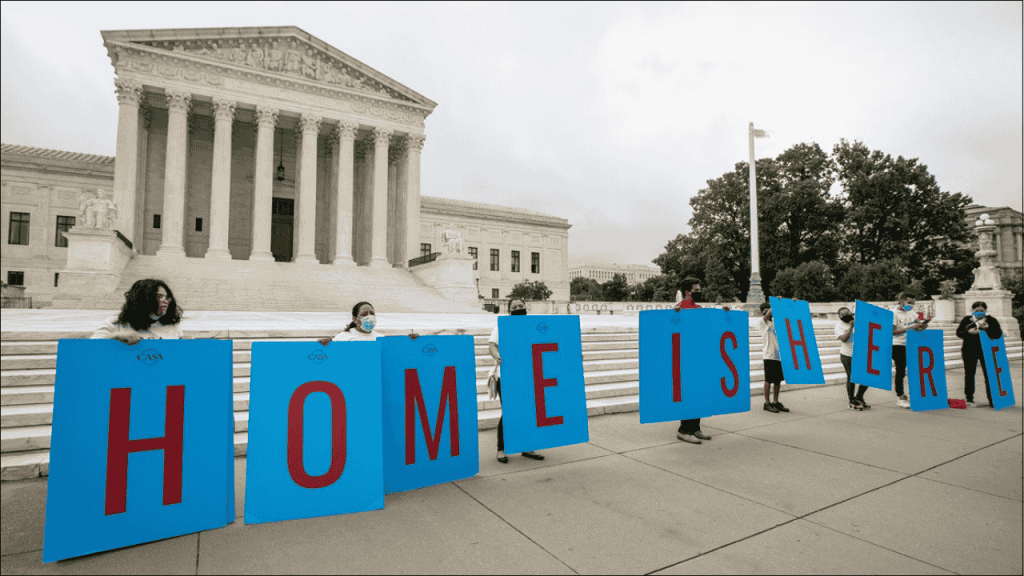
Many people come to the United States for safety, education, and a better life. Some arrive as children and grow up in the U.S. without legal immigration status. For these individuals, programs like DACA (Deferred Action for Childhood Arrivals) and other immigration relief options offer a way to live and work in the country legally. Understanding who can apply, how the process works, and what benefits these programs provide is very important.
Table of Contents
DACA Overview
DACA is a program created by President Obama in 2012 to protect undocumented immigrants who came to the U.S. as children.
- Full Form: Deferred Action for Childhood Arrivals
- Purpose: Offers temporary protection from deportation
- Benefit: Allows work authorization and access to a driver’s license
- Does Not Provide: Permanent residency or citizenship
- Renewable: Every two years
Basic Eligibility Criteria for DACA
To qualify for DACA, certain conditions must be met. Below is a clear list of these requirements.
- Arrival Age: Entered the U.S. before age 16
- Age Limit: Were under 31 years old on June 15, 2012
- Residency: Lived in the U.S. continuously since June 15, 2007
- Physical Presence: Present in the U.S. on June 15, 2012, and at the time of applying
- Entry Status: Had no legal immigration status on June 15, 2012
- Education or Military: Currently in school, graduated, or honorably discharged from the military
- Criminal Record: No felony, significant misdemeanor, or three or more minor misdemeanors
Required Documents for DACA Application
A strong application needs proper documentation. Here is what applicants usually need.
| Document Type | Examples |
|---|---|
| Proof of Identity | Passport, birth certificate with photo ID, school ID |
| Proof of Arrival | I-94 records, travel tickets, school records |
| Proof of Residency | Utility bills, bank statements, rental contracts |
| School or Military | Diplomas, transcripts, military discharge papers |
| Proof of Presence | Employment records, medical records, dated receipts |
| Passport Photos | Two passport-sized photos |
Application Process for DACA
The application involves filling out forms, submitting fees, and waiting for a response. Below are the main steps:
- Step 1: Gather all necessary documents
- Step 2: Fill out required forms – I-821D, I-765, and I-765WS
- Step 3: Pay the application fee (currently $495)
- Step 4: Mail the application to the correct USCIS address
- Step 5: Attend the biometrics appointment
- Step 6: Wait for USCIS decision by mail
Renewal Process for DACA
Renewing DACA is important to keep the protections active.
- Timeline: Submit renewal 120–150 days before expiration
- Documents: Update any changes in address, education, or legal issues
- Fee: Same as initial application ($495)
- Forms: I-821D and I-765 again
Other Immigration Relief Programs
Many immigrants may not qualify for DACA but might be eligible for other relief programs. Below is a list of common options.
| Program Name | Details |
|---|---|
| Temporary Protected Status (TPS) | Offered to people from certain countries facing war, natural disaster |
| Asylum | Given to those fearing persecution in their home country |
| U Visa | For victims of crime who help law enforcement |
| T Visa | For victims of human trafficking |
| Special Immigrant Juvenile Status (SIJS) | For children abused, abandoned, or neglected by parents |
| Parole in Place (PIP) | For family members of U.S. military personnel |
| VAWA | For abuse victims of U.S. citizens or permanent residents |
Key Points for Each Program
TPS
- Based On: Country conditions
- Requirement: Must already be in the U.S.
- Benefit: Work permit, no deportation
Asylum
- Apply Within: One year of entering the U.S.
- Based On: Race, religion, nationality, political opinion, or group membership
- Process: Interview or immigration court
U Visa
- Victim Type: Serious crimes (domestic violence, kidnapping, etc.)
- Cooperation: Must help police or prosecutors
- Wait Time: Long due to visa cap
SIJS
- Age Limit: Under 21
- Court Approval: Needed from family or juvenile court
- Result: Path to green card
VAWA
- Who Can Apply: Spouses, children, or parents of abusive U.S. citizens or green card holders
- Privacy: Abuser is not informed
Common Mistakes to Avoid
Avoiding errors can improve approval chances.
- Missing Deadlines: Always apply or renew on time
- Incomplete Forms: Double-check all sections
- Wrong Fees: Pay exact amount listed by USCIS
- Old Addresses: Always keep USCIS updated
- False Information: Never lie or hide facts
Helpful Tips for Applicants
Staying informed and prepared is essential.
- Use Legal Help: Free or low-cost immigration legal services are available
- Stay Updated: USCIS rules can change, so check regularly
- Keep Copies: Always save a copy of what you submit
- Track Application: Use the receipt number on the USCIS website
Legal and Community Support
Many non-profit organizations and community centers help immigrants understand their options.
| Organization Name | Services Offered |
|---|---|
| United We Dream | DACA help, advocacy, legal resources |
| RAICES | Free legal services, deportation defense |
| National Immigration Law Center (NILC) | Legal updates, policy change advocacy |
| Catholic Charities USA | In-person help, document preparation, legal aid |
| Immigrant Legal Resource Center (ILRC) | Legal training, workshops, community education |
Closing Perspectives
Programs like DACA and other immigration relief options offer hope and support to many people living in the U.S. without documents. While these programs do not offer permanent legal status, they provide safety, work opportunities, and a better quality of life. Understanding the eligibility rules and application process is the first step toward protection. Community support and legal help are also available to guide individuals through the journey. Making informed decisions can create a more secure future.





